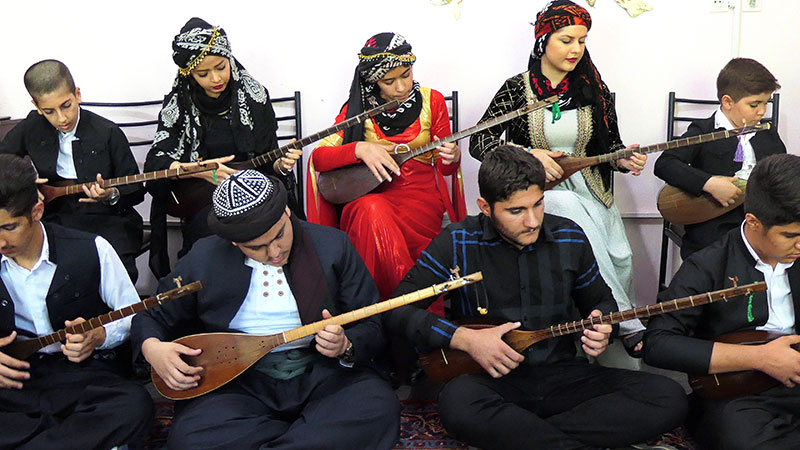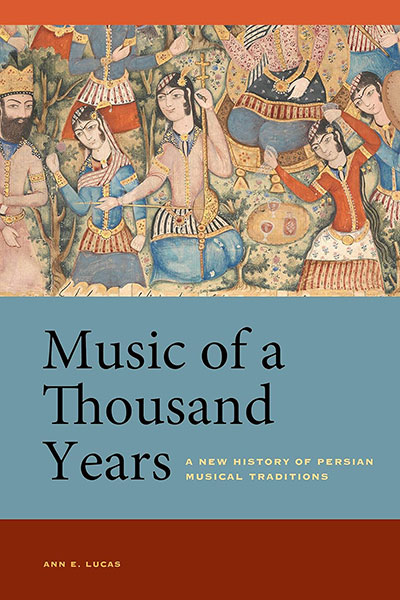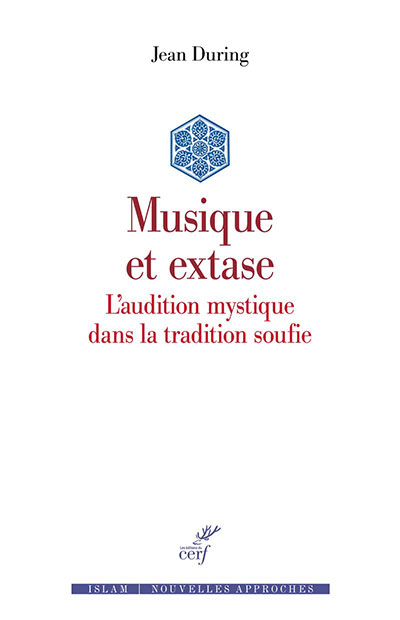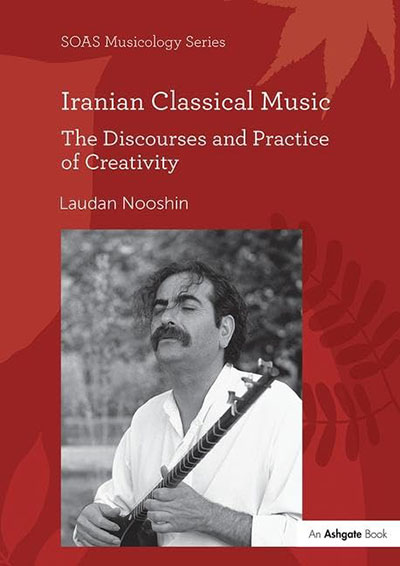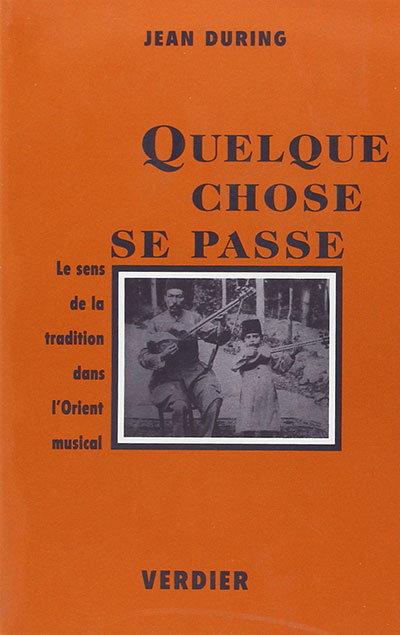A multi-ethnic and multicultural country, Iran is a mosaic of musical traditions. Popular or scholarly, spiritual or secular, urban, rural or nomadic, more or less local, changing and diffused, they punctuate the major stages of intimate, family and collective life. In the border provinces, different influences (Arab, Turkmen, Turkish, Indian, African, etc.) are present. Music is used in mystical brotherhoods, for the purpose of contemplation and prayer, to promote or express spiritual states or ecstasies. Music is an essential component of the ritual commemorations of the martyrdom of Imam Hossein (the ta’ziyeh), and it also punctuates the traditional wrestling sessions practiced in the zurkhaneh.
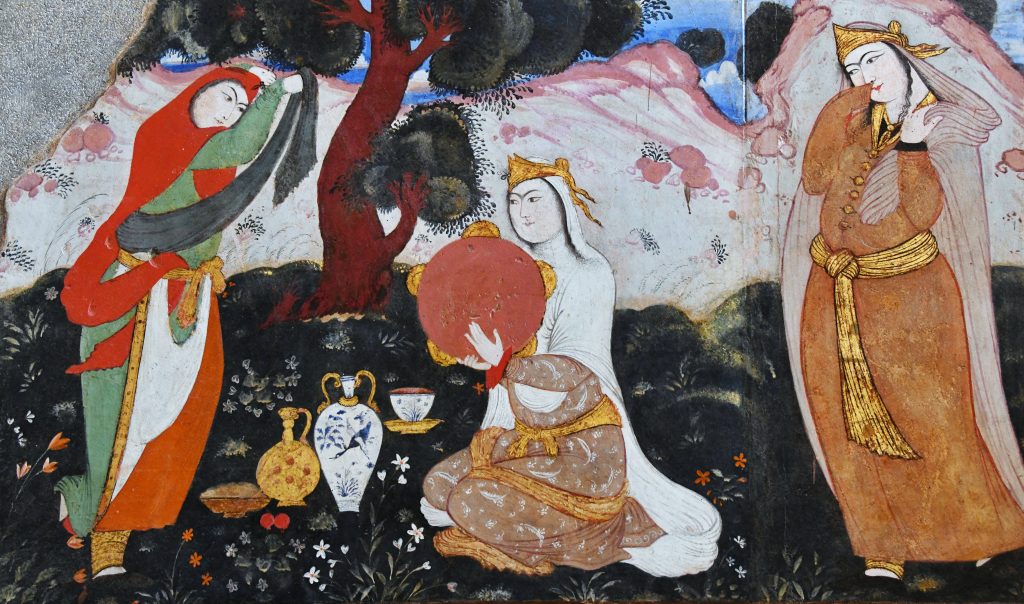
Dance and music in a mural from the Chehel Sotun palace (Isfahan, 17th century). Photograph: ©Patrick Ringgenberg.
